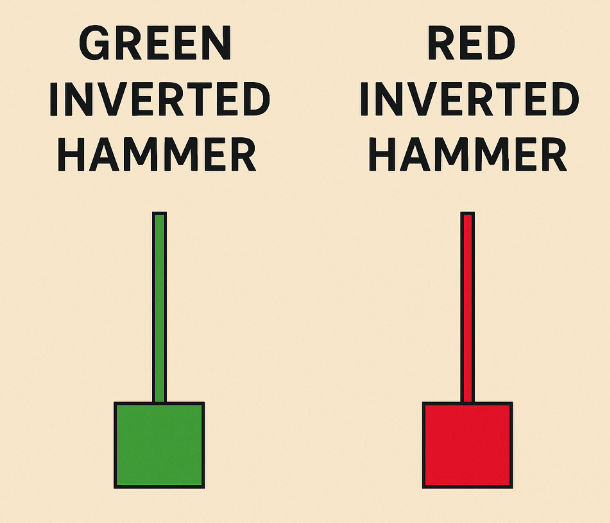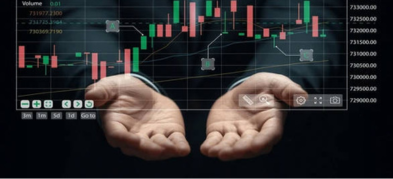
Ultima Markets App
Trade Anytime, Anywhere
Important Information
This website is managed by Ultima Markets’ international entities, and it’s important to emphasise that they are not subject to regulation by the FCA in the UK. Therefore, you must understand that you will not have the FCA’s protection when investing through this website – for example:
- You will not be guaranteed Negative Balance Protection
- You will not be protected by FCA’s leverage restrictions
- You will not have the right to settle disputes via the Financial Ombudsman Service (FOS)
- You will not be protected by Financial Services Compensation Scheme (FSCS)
- Any monies deposited will not be afforded the protection required under the FCA Client Assets Sourcebook. The level of protection for your funds will be determined by the regulations of the relevant local regulator.
Note: Ultima Markets is currently developing a dedicated website for UK clients and expects to onboard UK clients under FCA regulations in 2026.
If you would like to proceed and visit this website, you acknowledge and confirm the following:
- 1.The website is owned by Ultima Markets’ international entities and not by Ultima Markets UK Ltd, which is regulated by the FCA.
- 2.Ultima Markets Limited, or any of the Ultima Markets international entities, are neither based in the UK nor licensed by the FCA.
- 3.You are accessing the website at your own initiative and have not been solicited by Ultima Markets Limited in any way.
- 4.Investing through this website does not grant you the protections provided by the FCA.
- 5.Should you choose to invest through this website or with any of the international Ultima Markets entities, you will be subject to the rules and regulations of the relevant international regulatory authorities, not the FCA.
Ultima Markets wants to make it clear that we are duly licensed and authorised to offer the services and financial derivative products listed on our website. Individuals accessing this website and registering a trading account do so entirely of their own volition and without prior solicitation.
By confirming your decision to proceed with entering the website, you hereby affirm that this decision was solely initiated by you, and no solicitation has been made by any Ultima Markets entity.
I confirm my intention to proceed and enter this website Please direct me to the website operated by Ultima Markets , regulated by the FCA in the United KingdomWhat Is the Inverted Hammer Candlestick?
The inverted hammer candlestick pattern is a single-candlestick pattern that appears in a downtrend and signals a potential reversal to the uptrend. It’s characterised by a small body at the bottom, a long upper shadow, and a short or non-existent lower shadow. It looks as if a hammer is turned upside down – hence the name “inverted hammer.”
What Is the Meaning of an Inverted Hammer Candlestick?
The inverted hammer tells a story of a potential trend reversal. During the downtrend, sellers were in control, driving prices lower. When the inverted hammer forms, it shows that even though sellers pushed the price down significantly as evidenced by the long upper shadow, buyers entered the market and pushed the price back up towards the opening price.
This suggests a weakening of the selling pressure and a potential increase in buying interest. It’s a signal that the downtrend might be losing steam and a new uptrend could be on the horizon.

How to Identify the Inverted Hammer Candlestick Pattern on a Chart?
Identifying the inverted hammer is crucial for effective trading. Here’s what to look for:
- Prior Trend: The inverted hammer appears at the bottom of a downtrend. This prior downtrend is essential for the pattern’s validity. Without it, the candlestick isn’t an inverted hammer, just a candlestick with a long upper wick.
- Small Body: The body of the candlestick, representing the open and close prices, should be relatively small. This indicates that the
opening and closing prices were close together. - Long Upper Shadow: The upper shadow, representing the highest price reached during the period, should be long, ideally at least
twice the length of the body. This long shadow reflects the buyers’ pushback against the sellers. - Short or Non-Existent Lower Shadow: The lower shadow, showing the lowest price reached, should be very short or non-existent. This suggests limited selling pressure after the initial price drop.

Green vs. Red Inverted Hammer
While the colour of the inverted hammer’s body isn’t as critical as its shape and placement, it can offer additional insights. A green or white body indicates that the closing price was higher than the opening price, suggesting stronger buying pressure.
A red or black body means the closing price was lower than the opening price, indicating some remaining selling pressure. However, both green and red inverted hammers are considered bullish reversal signals when they appear in a downtrend. The shape and location are the primary indicators; colour is secondary confirmation.
How to Trade When the Inverted Hammer Candlestick Occurs?
When you are trading the inverted hammer, you need to approach it with caution and confirmation from other indicators. Don’t jump into a
trade too rapidly solely due to the appearance of the pattern. The following is a suggested approach for you to adopt:
Identify the Pattern: First, clearly identify the inverted hammer candlestick pattern on your chart. Ensure it meets all the criteria: prior downtrend, small body, long upper shadow, and short or non-existent lower shadow.
Confirmation: Wait for confirmation of the bullish reversal.
This could come from:
- A Bullish Candlestick: Look for a bullish candlestick (e.g., a green/white candle closing above the inverted hammer’s close) following the inverted hammer. This confirms the buying pressure.
- Increased Volume: A surge in trading volume during or after the inverted hammer formation strengthens the signal.
- Technical Indicators: Use other technical indicators, such as the Relative Strength Index (RSI) or moving averages, to confirm the potential reversal. For example, if the RSI is oversold and the inverted hammer appears, it adds weight to the bullish signal. Similarly, if the price breaks above a key moving average after the inverted hammer, it can be a good entry point.
Entry Point: Once you have confirmation, consider entering a long (buy) position. A common strategy is to place a buy order
slightly above the high of the confirming candlestick or the high of the inverted hammer itself. This helps to ensure that the price is
indeed moving upwards before you enter.
Stop-Loss Order: Crucially, place a stop-loss order below the low of the inverted hammer or the low of the confirming candlestick.
This helps to limit your potential losses if the price moves against you. Risk management is paramount.
Monitor the Trade: After entering the trade, monitor the price action closely. If the price fails to move as expected or if bearish
signals appear, consider exiting the trade.
Practice and Patience: Like any trading strategy, mastering the inverted hammer takes practice. Don’t expect to become an expert overnight. Start with paper trading or small positions until you are comfortable with the pattern and how it works. Patience is key. Not every inverted hammer will lead to a successful trade.
Conclusion
The Inverted Hammer candlestick pattern is a powerful tool for spotting potential bullish reversals after a downtrend. However, like all price action signals, it should never be used in isolation. For best results, combine the pattern with volume analysis, key support zones, or momentum indicators like RSI or MACD to confirm the trade setup.
Traders looking to refine their candlestick strategy should practice identifying Inverted Hammers in demo environments and develop solid risk management rules.
Ready to put your candlestick knowledge into action? Start trading with a reliable forex broker like Ultima Markets, where you get advanced charting tools, tight spreads, and institutional-grade execution.
Disclaimer: This content is provided for informational purposes only and does not constitute, and should not be construed as, financial, investment, or other professional advice. No statement or opinion contained here in should be considered a recommendation by Ultima Markets or the author regarding any specific investment product, strategy, or transaction. Readers are advised not to rely solely on this material when making investment decisions and should seek independent advice where appropriate.












